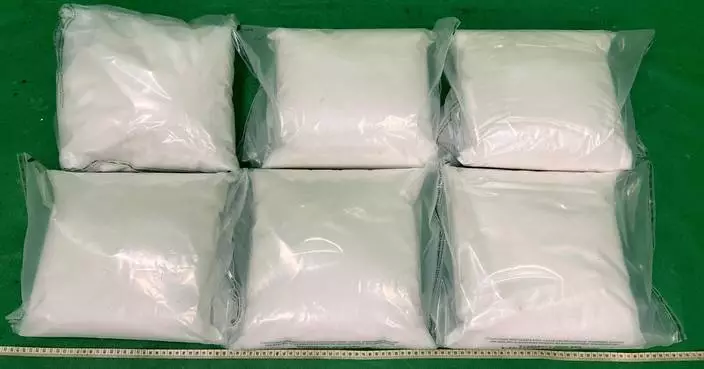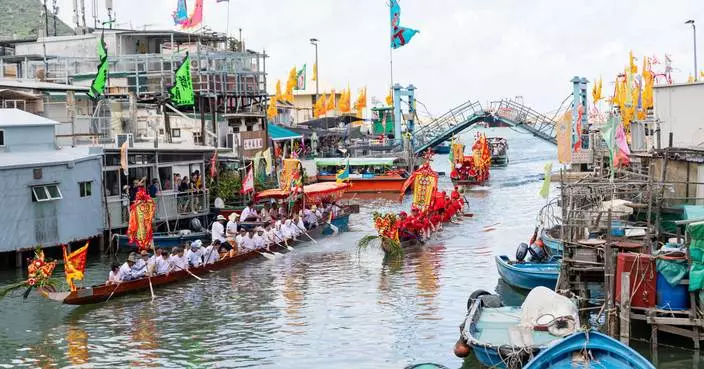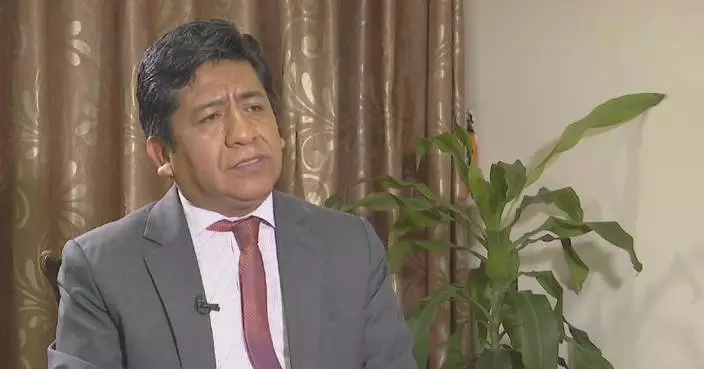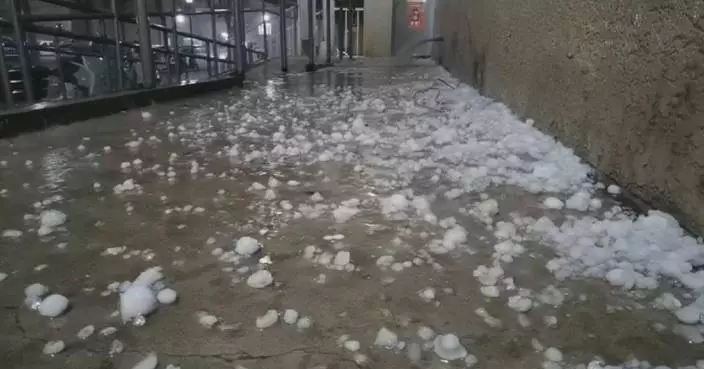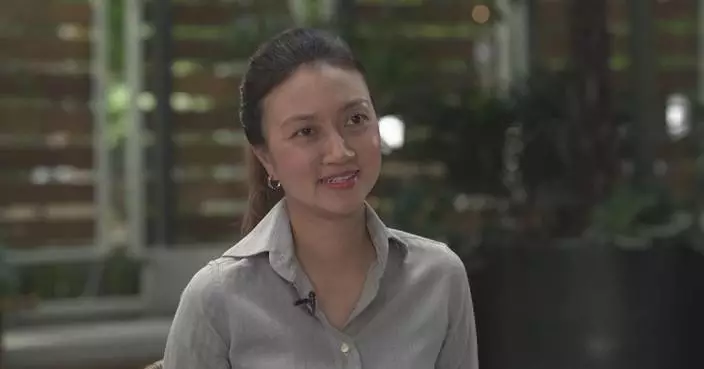CHP continues to investigate food poisoning clusters involving passengers on flights from Nepal
The Centre for Health Protection (CHP) of the Department of Health today (January 10) continued to investigate a food poisoning cluster involving passengers on a flight arriving in Hong Kong from Nepal yesterday (January 9). The cluster is believed to be epidemiologically linked to a food poisoning cluster announced on January 8, in which the affected people had similar symptoms and had consumed similar food items before the onset of the illness. The two clusters involved a total of 36 people. The CHP appealed to passengers travelling on Cathay Pacific Airways Limited (CX) flights (flight number: CX640) from Kathmandu to Hong Kong and landing on January 8 and 9 to call the CHP hotline (2125 2372) for an appropriate health assessment.
The cluster reported on January 9 involved 20 persons (14 males and six females) aged between 11 and 51 coming from eight unknown families/groups. They developed food poisoning symptoms, including vomiting, diarrhoea, nausea, abdominal pain and fever, about 10 to 30 minutes after consuming in-flight meals. Thirteen of them sought medical advice upon landing in the early morning of January 9. None required hospitalisation. Other than the food served on the flight, the CHP's investigation did not find that they had consumed any common food before boarding the plane.
Regarding the cluster announced on January 8, the number of affected people has increased to 16. The six newly reported cases included one male and five females. Of the 16 people, nine were from the same exchange group, and the remaining seven do not know each other. They arrived in Hong Kong on the early morning of January 8 and developed food poisoning symptoms, including vomiting, nausea, abdominal pain and fever, about 10 to 30 minutes after having meals served on the flight. The investigation revealed that the seven persons who were not part of the exchange group had not consumed any common food before boarding the plane.
The CHP is conducting a comprehensive investigation into the two cases from various angles, including reviewing the food consumed by the symptomatic persons before the onset of illness, such as bread, fruits, beetroot salad, lamb rice, chicken rice and ice-cream, which were common food items served on the flights concerned, as well as other food items consumed at the airport or in Nepal prior to boarding. Investigators took samples for testing from the same batch of food that was not served to passengers on either flights.
The CHP is still actively investigating the incidents and does not rule out the possibility that the number of people affected may increase. Staff of the CHP and the Centre for Food Safety of the Food and Environmental Hygiene Department have conducted an inspection at the Cathay Pacific Catering Service (H.K.) Limited, which supplied the food for the flights concerned, and the aircraft concerned to examine the food preparation process and hygiene. The investigation found that the food concerned was stored at an appropriate temperature and in an appropriate manner. However, as the beetroot salad requires more manual preparation and does not need to be reheated before consumption, the CHP has, as a precaution, instructed the premises concerned to suspend the supply of beetroot salad immediately.
The CHP has reported the cases to the World Health Organization and the Nepalese health authority, and inquired whether there are any other reports from other places of food poisoning among passengers on flights from Nepal to destinations other than Hong Kong. The CHP appealed to those who were on the flights operated by CX (flight number: CX640) from Kathmandu, Nepal, to Hong Kong on January 7 and 8 (Nepal time) to call the CHP hotline for follow-up and medical surveillance. The hotline has been in operation since January 9 and will continue until January 17, from 9am to 5pm, Monday to Friday, and from 9am to 1pm on Saturday and Sunday. They should seek medical advice immediately if they develop symptoms of infection, such as fever or feeling unwell.
To prevent foodborne diseases, members of the public are reminded to maintain personal, food and environmental hygiene at all times. When dining out, one should:
Avoid eating raw seafood;
Be a discerning consumer in choosing cold dishes, including sashimi, sushi and raw oysters at a buffet;
Choose pasteurised eggs, egg products or dried egg powder for dishes that often use lightly cooked or uncooked eggs;
Patronise only reliable and licensed restaurants;
Store and reheat pre-cooked or leftover foods properly before consumption;
Ensure food is thoroughly cooked before eating during a hotpot or barbecue meal;
Handle raw and cooked foods carefully and separate them completely during the cooking process;
Use two sets of chopsticks and utensils to handle raw and cooked foods;
Avoid patronising illegal food hawkers;
Drink boiled water;
Refrain from trying to use salt, vinegar, wine or wasabi to kill bacteria as they are not effective; and
Always wash hands before eating and after going to the toilet.
DH responds to media enquiries on air-conditioning interruption in private hospital
In response to media enquiries regarding the air-conditioning interruption that occurred at St. Teresa's Hospital in July 2024 for about an hour, the Department of Health (DH) today (May 14) gave the following response:
Regulatory regime
--------------------
The DH regulates licensed private hospitals in accordance with the Private Healthcare Facilities Ordinance (Cap. 633) (the Ordinance). The Code of Practice for Private Hospitals (the CoP) issued by the Director of Health in accordance with the Ordinance sets forth licensing and operating standards for private hospitals, including the relevant requirements for hospital facilities and equipment.
The CoP stipulates that hospital installations and equipment must be kept in good operational order and requires hospitals to have contingency plans for emergencies (such as fire and the cessation of water or electricity supply). It also sets out that healthcare engineering systems (including electrical installations, specialised ventilation systems and medical gas supplies) must be properly maintained to meet the service need and ensure patient safety. Reportable events for private hospitals are also set out in the CoP.
The DH regularly reviews and updates regulatory standards for private healthcare facilities, together with the experts of the Advisory Committee for Regulatory Standards for Private Healthcare Facilities in accordance with the established mechanism of the Advisory Committee. The DH will also continue to review the CoP in accordance with the mechanism in order to protect the interest of the public.
Investigation work
---------------------
Regarding the incident at St. Teresa's Hospital, the DH was notified by a doctor on September 2, 2024, about an air-conditioning interruption in the operating theatres on the second floor of the hospital concerned in the evening of July 31, 2024, which lasted approximately one hour.
Although air-conditioning interruption is not a reportable event of private hospitals, the DH considered that the incident might have potential patient safety concerns and therefore promptly initiated an investigation on the same day (September 2, 2024) the notification was received. The DH sent staff to conduct an inspection at the hospital concerned, checked relevant documents, evaluated the effectiveness of its contingency measures, assessed the environmental condition of the operating theatres during the interruption and followed up on the remedial actions.
According to the investigation, the incident involved a malfunction of the air-conditioning system used to regulate the room temperature which lasted for about one hour. During which, 10 surgeries were performed in various operating theatres. The hospital explained that dehumidifiers were immediately deployed in the operating theatres where higher risk surgeries were being performed, including the one where the doctor was performing an operation. According to the hospital and the nurses on site, the severity of condensation in the operating theatre did not result in water dripping onto the surgical site of patients. The ventilation system used for infection control in the operating theatres (including air filtration equipment, hourly air change rate and a positive pressure environment) was operating normally. Apart from immediately responding to the incident, the hospital has also worked with its contractor to identify the cause of the incident and take measures to prevent recurrence of similar incidents.
In addition, the hospital conducted prompt follow-up by conducting air sampling of the operating theatres and surveillance on conditions of patients who underwent surgeries during the affected period for infection, with no abnormality detected. Based on the available evidence gathered, the DH considered that there was insufficient evidence to show that the hospital has breached the requirements of the Ordinance or the CoP.
Complaint handling
---------------------
The Ordinance also provides for a complaints handling mechanism against private healthcare facilities, which includes the establishment of the statutory Committee on Complaints Against Private Healthcare Facilities (Complaints Committee), with the DH serving as the Secretariat, to handle complaints lodged by patients against licensed private healthcare facilities (including private hospitals).
There were media enquiries on whether the DH had received any complaints from patients. According to the DH's existing records, the DH received a call on September 12, 2024, from a member of the public who enquired about the complaint procedure against private healthcare facilities, and mentioned the air-conditioning system of St. Teresa's Hospital was not functioning properly when underwent surgeries. The Secretariat explained to the enquirer the function of the Complaints Committee and statutory procedures of lodging a complaint promptly. The Secretariat on the following day (September 13, 2024) sent information on the complaint procedures with complaint form and statutory declaration form to the email address provided by the person as requested. The enquirer confirmed receipt of the concerned information and forms by email but since then, the Complaints Committee has not received any complaint from the concerned enquirer in relation to this incident.
The DH has completed investigation based on all available information, but will continue to closely monitor licensed private healthcare facilities. If there is new and concrete evidence, the DH will take appropriate actions as necessary to safeguard patient safety.






